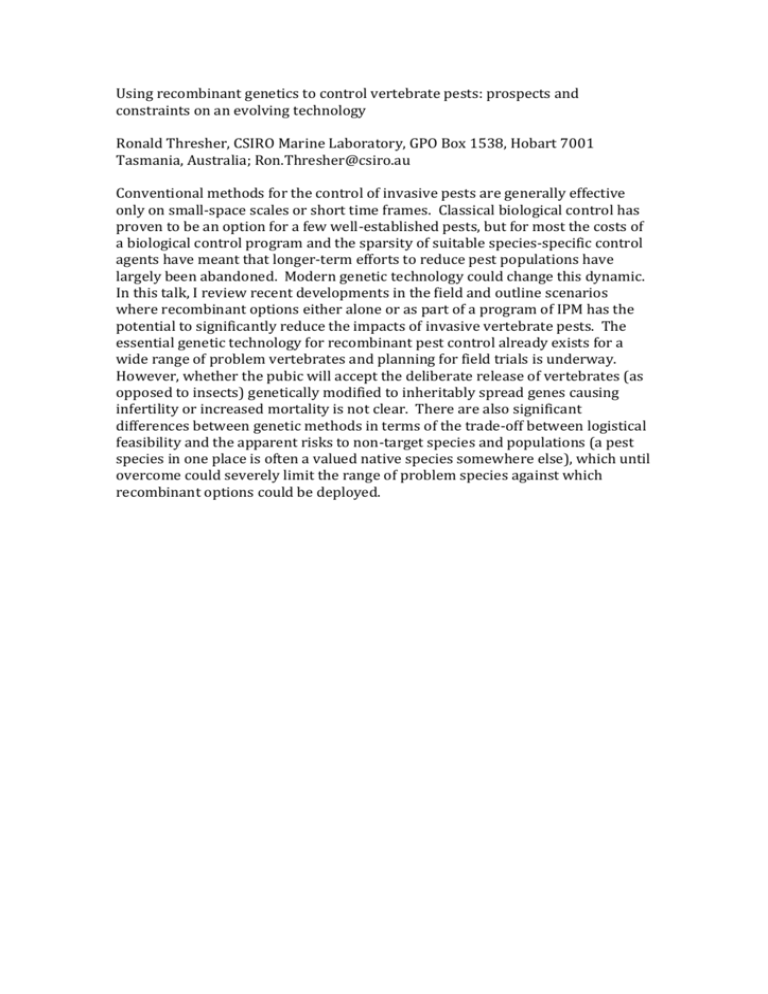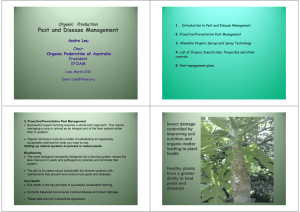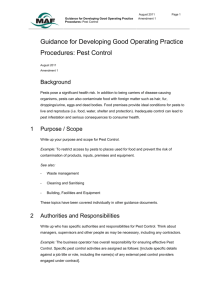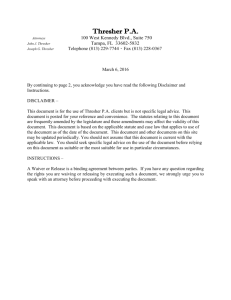Using recombinant genetics to control vertebrate pests: prospects
advertisement

Using recombinant genetics to control vertebrate pests: prospects and constraints on an evolving technology Ronald Thresher, CSIRO Marine Laboratory, GPO Box 1538, Hobart 7001 Tasmania, Australia; Ron.Thresher@csiro.au Conventional methods for the control of invasive pests are generally effective only on small-space scales or short time frames. Classical biological control has proven to be an option for a few well-established pests, but for most the costs of a biological control program and the sparsity of suitable species-specific control agents have meant that longer-term efforts to reduce pest populations have largely been abandoned. Modern genetic technology could change this dynamic. In this talk, I review recent developments in the field and outline scenarios where recombinant options either alone or as part of a program of IPM has the potential to significantly reduce the impacts of invasive vertebrate pests. The essential genetic technology for recombinant pest control already exists for a wide range of problem vertebrates and planning for field trials is underway. However, whether the pubic will accept the deliberate release of vertebrates (as opposed to insects) genetically modified to inheritably spread genes causing infertility or increased mortality is not clear. There are also significant differences between genetic methods in terms of the trade-off between logistical feasibility and the apparent risks to non-target species and populations (a pest species in one place is often a valued native species somewhere else), which until overcome could severely limit the range of problem species against which recombinant options could be deployed.











